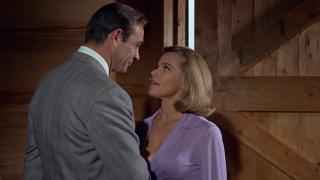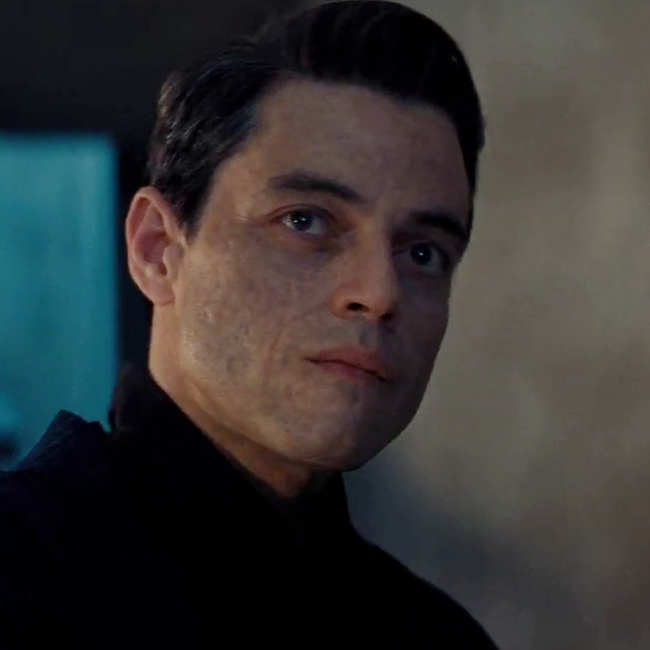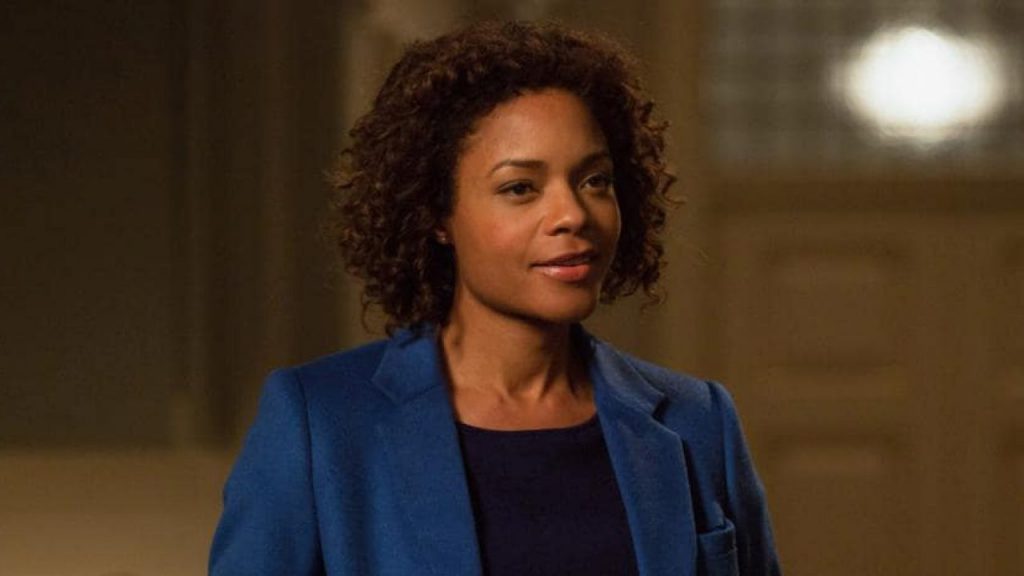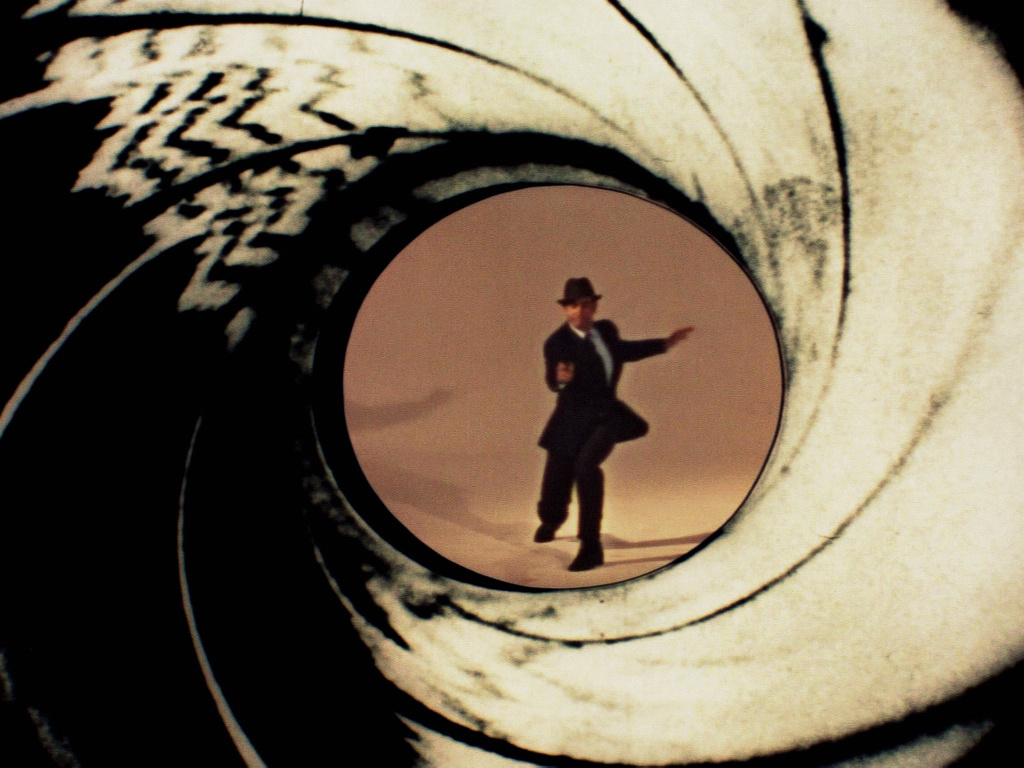I’m of the generation that had a hard time accepting anyone other than the great Sean Connery as James Bond, agent 007. When he left the franchise I never once went to see any of his successors.
I weakened in 2006 when Daniel Craig was cast as Bond in a new version of Casino Royale, which hadn’t previously been made except as a comedic parody in 1967 starring David Niven as an ‘elderly’ Bond, perish the thought! That new version marked a return to basing the movie on an actual Ian Fleming book plot, which partly accounts for my change of heart as I had actually read all the books as an adolescent fan girl*. But mainly I thought Daniel Craig was the first post-Connery Bond to capture the essence of the character, having something of the enigmatic brooding sensualist about him, with something hard at the centre. Plus he had that same muscular athleticism as Sean Connery. Wasn’t there just a smidgin of namby-pambiness about Moore, Lazenby, Dalton and Brosnan?
I gave Quantum of Solace (2008) and Spectre (2015) a miss, because advancing maturity had given me an aversion to action movies. Some atavistic impulse propelled me to see Skyfall in 2006. Or maybe I was just going along to accompany a friend. Whatever, I retained an interest in the Bond mythology as pop culture phenomenon, so I went along to see this latest Bond outing, and Daniel Craig’s swansong, for, ahem, research purposes.
Things sure have changed for 007 over the years. Remember that scene in Goldfinger where he basically rapes Pussy Galore in the hayshed? Such is Bond’s sexual magnetism that from being a lesbian in the pay of Goldfinger she converts there and then to become Bond’s ally, turning on her old boss and saving the day! You’d never see that in a Bond movie these days. In fact I’m surprised they still allow re-runs of Goldfinger on TV.

By 1995’s Goldeneye, Bond’s Secret Service boss M had become a woman, played by Judi Dench. (This had real-life precedent; Dame Stella Rimington was head of MI5 for many years until 1996 when she took up writing spy thrillers.) In a sign of changing social and political mores she called Pierce Brosnan’s 007 a ‘sexist, misogynist dinosaur’ and ‘a relic of the Cold War’. He says ‘point taken’.
Thus began the process of converting Bond into, if not exactly a SNAG, something a bit less toxically masculine than Fleming’s Bond, so that by this latest venture, Daniel Craig’s 007 is displaying some emotional fragility over the death of the beloved but treacherous Vesper Lynd from Casino Royale, and appears to have found true love again in the form of French psychiatrist Dr Madeleine Swann, who first caught his eye in 2015’s Spectre, the previous Bond movie.
Over the years Bond has become a moderate drinker and has quit smoking. I re-read From Russia With Love not long ago, and it occurred to me that Fleming’s Bond would have been considered a loser today: he drank an unhealthy amount of hard liquor and smoked up to two packets of fags a day, sharing the addictive vices of his creator. Fleming must have worried about this substance abuse a bit because he had M routinely ticking Bond off and ordering him into rehab.
In No Time to Die we see Bond having just the one drinkie, and it is of course a martini ‘shaken, not stirred’.
Other familiar tropes are back. The preposterously silly plot, for instance. No need for a synopsis because it’s essentially a twisty-plot action movie that follows the Bond formula: lots of eye-popping stunts and loads of mayhem involving flash cars, dangerous driving, high-tech gadgetry and explosions.
The charismatic Bond villain is another essential feature, and he (it’s usually a he) has to have some unfortunate personal affliction. Think Mads Mikkelson’s bleeding eye in Casino Royale. Here, the evil genius goes by the name of Safin. He has an unsightly skin condition, supposedly caused by dioxin poisoning. There’s a suggestion this is what motivates his vengeful plan to control the world by spreading a nasty virus that will infect everyone except him and his minions. He’s played by Rami Malek, who won an Oscar for playing Freddie Mercury in Bohemian Rhapsody in 2019. Bond’s old nemesis Ernst Stavro Blofeld from Spectre comes into it too, but this might be just for old times’ sake.
Other familiar characters are back. M is a bloke once again, here played by Ralph Fiennes looking nicely mature. The prim but alluring Moneypenny is still there as his gatekeeper, but nowadays she’s much more than a simple secretary; she gets to be part of the villain-thwarting brains trust. His old CIA buddy Felix Leiter is back too. Inclusive casting has made them both brown people, but the important things about them haven’t changed: they are still James’s staunch allies against both the villains and the pesky higher-ups.
Ben Whishaw returns for the third time as gadget-man Q. Whishaw plays him as a nerdy gay tech-head. Fun fact: While Q has always been played by a man (John Cleese among them), the head of MI6 revealed in 2017 that the then real-life Q was a woman!
Some things never change. The baddies are all still rotten shots. They come at our hero at regular intervals from every direction, to be picked off one by one just like in computer games. It occurred to me that contemporary Bond movies are made with an eye to young viewers accustomed to this kind of action.
Of course it wouldn’t be a Bond movie without that signature theme that plays over the iconic gunbarrel sequence, and is reprised constantly throughout the action. It really is the most brilliant mood-setter.
All in all, there’s plenty here to satisfy diehard fans of the franchise. I just wish they’d get over this compunction to put the word ‘die’ into the movie titles.
First there was Live and Let Die in 1973. Then came Tomorrow Never Dies in 1997 and Die Another Day in 2002, now No Time To Die. Why the lack of imagination? Is it just to sort out the devotees from the dabblers at quiz nights? That’s almost as good a question as who’s going to be the next James Bond, now that Daniel Craig has pulled the pin.
More fun facts I can’t resist:
Until Ļicence To Kill, all official Bond films shared titles with novels by Ian Fleming (or short stories, in the case of Octopussy, A View To A Kill, For Your Eyes Only and The Living Daylights). Quantum of Solace was also a Fleming story. However, Licence To Kill, GoldenEye (the name of Ian Fleming’s house in Jamaica), Tomorrow Never Dies, The World Is Not Enough (Bond’s family motto), and Die Another Day were all either invented or taken from non-Fleming books.
*Except for one called 007 In New York, the only Fleming story not to be referenced in any official film.








